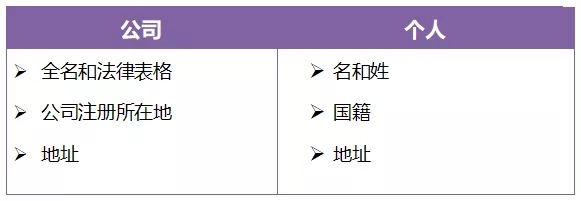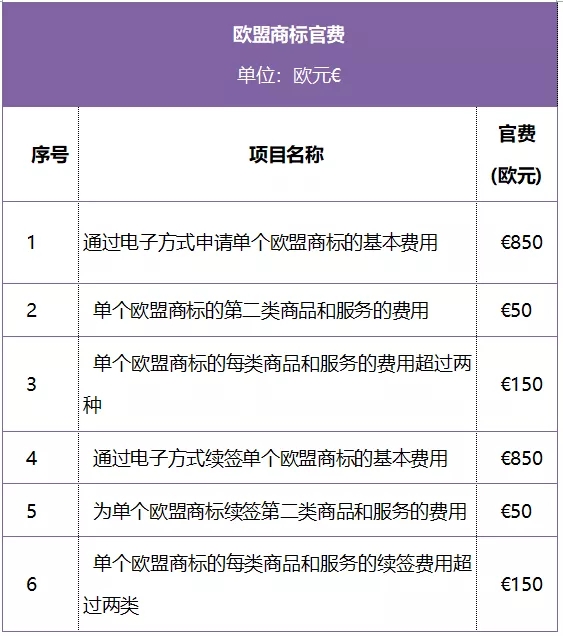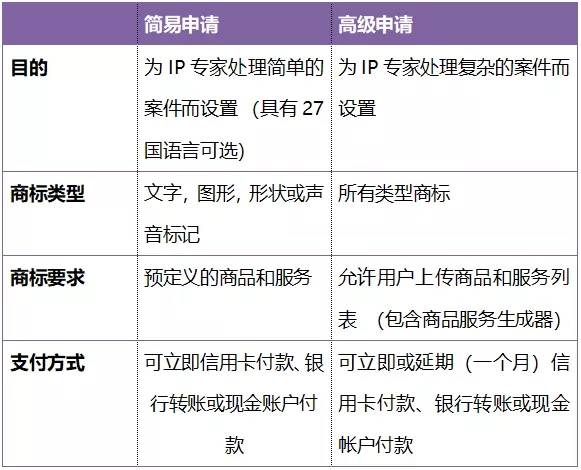The EU Statistical Bureau released in the news briefing on April 5, 2021. In 2020, China replaced the United States for the first time to become the largest trading partner of the European Union, which fully reflects it. The strong toughness and importance of China -EU economic and trade. At the same time, the international competitiveness of overseas companies has continued to improve. According to customs statistics, in 2020, Shenzhen's imports and exports to the European Union were RMB 279.75 billion, of which private enterprises' imports and exports accounted for nearly 60 %, about 164.54 billion yuan. In the fierce international competition, Shenzhen \u0026 ldquo; went to sea \u0026 rdquo; companies have been repeatedly traded by trademarks, and endless trademark disputes, applying for registration of international trademarks and strengthening trademark protection have become many companies entering the EU market and obtaining overseas brand market positioning. The key step. EUIPO trademark registration has the characteristics of \u0026 ldquo; cost -effective costs, convenient procedures, and coverage of the area wide \u0026 rdquo; through EUIPO, the EU trademark layout is the fastest market strategy of Shenzhen export -type enterprises to obtain a large -scale protection of EU countries. This report is mainly analyzed from three aspects: EU trademark registration, EUIPO trademark registration advantages and disadvantages, and EUIPO trademark registration process for reference.
1. EU trademark (EUTM) Entry Overview
[1) Concept
EU trademark refers to the relevant EU trademark law. It stipulates that if it is registered with the EU trademark -related agencies, it is effective within the EU's scope to identify and distinguish between commodities or services. EU trademarks and trademarks in various countries in the European Union are running parallel and do not conflict with each other. In the European Union, there are four layers of trademark registration, which depends on business needs.
(2) EU trademark \u0026 \u200b\u200bldquo; Four -layer system \u0026 rdquo;

The country, region, and EUIPO routes are complementary systems, which are parallel. For applicants who do not want or do not need to protect their trademarks in all 27 member states in the EU, they can choose to submit applications to relevant countries separately; if they only need to be protected by trademarks in Belgium, the Netherlands, and Luxembourg, they can choose to apply separately Bichel trademark. Analysis from the official registration method of EUIPO.
(3) Application basis
1. Trademark applicant requirements
Any individual or company can have EU trademarks, the applicant's detailed information must be made public and maintains the latest status Essence The company and individual's information at the time of application are slightly different.

In principle, the EU registered trademark does not require an agent. Apply forIf people are requested to have no business or real and effective institutions or residences in the European economic zone, they must designate an agent to handle the request procedures for all the trademark authorities that are filled in except for the application form.
2. The type of trademark that can be applied
EU trademark can consist of any logo. On October 1, 2017, due to revised regulations (EU) 2015/2424 [5], delete \u0026 ldquo The graphic indicates [6] \u0026 rdquo;. There are three types of trademarks in the EU: ordinary trademarks, prove trademarks and collective trademarks.
(1) Ordinary trademark
A separate mark can be used to distinguish the goods and services of a specific company and other companies. However, this does not mean that a single trademark must be owned by a single individual, and a separate trademark can be owned by one or more legal persons or natural persons, which means that applicants can have a variety of types. The official application fee of a single trademark on a category starts at 850 euros (electronic method)
(2) Collective trademark
The commodity and services of the collective trademark will be the company's products and services to the competitors of their competitors and their competitors Commodity and service are distinguished. Collective trademarks are conducive to establishing consumers' confidence in their products or services. Most collective trademarks are currently used to identify products with certain characteristics. EUIPO currently stipulates that only manufacturers, service providers, traders associations, and legal person associations under international law can apply for collective trademarks. The official application fee for collective trademarks in a category is 1,500 euros (electronic methods).
(3) Prove the trademark
It proves that the trademark was launched in EUIPO on October 1, 2017. Although it has been in the national system for many years, they are new types of trademarks for EU standards. They are used to indicate the certification requirements of goods or services that meet the certification agencies or organizations, and it is also a sign of the quality of supervision. Any natural person or legal person, including officials, institutions, and subjects under the jurisdiction of the government, can apply for EU certification signs, but provided that the applicant does not engage in business involving certification products or services. The official application fee of a trademark on a category is 1,500 euros (electronic).
3. Nice Category
EU trademark application adopts Nice classification, and the products and services applied for at least one of the Nice classifications (Nice Category 45 categories).
(4) Application fee
1. Basic expenses
The official application fee shall be paid within one month from the date of receipt of the application. After paying, EUIPO will process all relevant trademark applications and process review -related emails. The following table takes an email application method as an example [7].
 2. Payment method
2. Payment method [12]3] Applicants can pay trademark fees through credit cards, bank transfers or EUIPO's current accounts. The office provides online services to the EUIPO account holder, and users can inquire about transactions and real -time information.
2. EUIPO trademark registration advantages and disadvantages
Application for trademarks through EUIPO will be protected in all 27 member states. It has the characteristics of economy, fast and money. At the same time, there are also insufficient trademark registration through EUIPO. The following will analyze the advantages and disadvantages through the EUIPO trademark registration advantages and disadvantages. The applicant can weigh the advantages and disadvantages according to the actual situation and make an objective trademark registration.
(1) EUIPO trademark registration advantage
1. Low application fee. Just register once, you can use the trademark in 27 member states throughout the European Union. Compared with submitting applications in various member states, the cost has also been significantly reduced.
2. Procedural centralization. A trademark registration can be protected by 27 EU member states, and the ruling of the relevant trademark cases will be implemented in all countries in the EU.
3. EU trademarks are widely used. The use of any member states will be regarded as the use of all member states. Even if the trademark is only used in one country in the junior high school, it will not encounter the danger of being revoked in other countries.
4. Enjoy the preferential priority of the Paris Convention. The same trademark, within 6 months from the application date of the Paris Convention member states, submits the same trademark to the EU Intellectual Property Office in the same scope of the same category, and can enjoy the priority right.
5. There are many trademark types. Not only traditional trademarks such as words and signs can be registered. Various new trademarks such as sound, odor, product appearance and structure, can also apply for registration.
6. Trademarks can cover more commodities or services. You can apply for multiple types of applications.
(2) The disadvantage of EUIPO trademark registration
1. EU trademark application registration stage, the chance of being objected is high. Among the 27 member states, any country's pioneers can raise objections during the announcement period. If the objection is established, the entire EU trademark application will be rejected. Although the EU application can be converted into a state application and retains the original application date, the applicant must pay the conversion fee to each country.
2. The cost and cost of solving objections are high. From the application to the approval registration, if the trademark review is smooth and the procedure of dismissal or objection is not encountered, the trademark application may be registered in about six months. However, if objections are encountered during the announcement period, the trademark cannot be registered in time. The objection process takes about 1-2 years, depending on the specific case.
3. EUIPO trademark registration process
There are two ways to get EUIPO EU registered trademarks: one is to apply directly to the EU Intellectual Property Office (EUIPO); the other is through the Madrid International Bureau (WIPO) Application for trademark international registration and designated EU extension. EUIPO acknowledges the priority of 6 months. If China submits the same trademark registration application again within 6 months after the first application of trademark registration, it can enjoy the priority. If a trademark registration application is proposed within 6 months after the first exhibition of the product organized or recognized by the European Union, it can also claim the exhibition priority. The following introduces directly through EUIPO to apply for a trademark registration process.
(1) In the early stage of the application
, you can retrieve the trademark you want to apply for through the EU trademark database to understand the risk of the application for trademarks. The EU Intellectual Property Office will not review the absolute reason for the application of trademarks, that is, the same and similar review. However, the applicant can evaluate the chance of the trademark application in the case of objections through inquiries.
(2) Application
EUIPO application is mainly divided into simple applications, advanced applications and fast channel applications. The following table is the main difference between simple applications and high -level applications:
In order to facilitate small and medium -sized enterprises and individuals without legal representatives, EUIPO provides fast channel options. The fast channel application will apply Get the registration certificate in a short period of time. However, when submitted by the fast channel mode, only text and images are limited to, and they must be paid first. Generally, the conventional form is used for payment within one month from the date of application.

(3) Announced
The examiner will check whether the applicant's application contains all relevant details, categories, and start search to ensure that there is no conflict. If there are any questions in the application, such as lack of detailed information, unrelated categories, or the uniqueness of trademarks, EUIPO will notify the applicant that the applicant should reply to such queries within two months. Special circumstances can also be required to extend for two months. If the examiner still refuses the applicant's application, the applicant has the right to appeal, or the EU application can be converted into a single country in the European Union (if there is no conflict). \u0026 nbsp; \u0026 nbsp; \u0026 nbsp; \u0026 nbsp;
(4) Objury
After reviewing the trademark, it will enter the announcement period. Any third party can raise objections within three months after the release. Applicants can apply for the objection application, and the EU Intellectual Property Office is determined based on the evidence and materials submitted by the two parties.
(5) Registration
The end of the objection period or the objection is not established (if any), EUIPO will officially approve the registration of the trademark. Applicants can download within two days after the announcementCertificate of Registration.EUIPO usually does not actively provide a paper copy of the certificate, but applicants can apply for it.

 CHINESE
CHINESE ENGLISH
ENGLISH





